
With summer on the way, the time you spend in your garden is about to increase dramatically. And that is a beautiful thing!
Fresh air, sunlight, dirt on your hands and feet, beneficial insects flying about with a sense of purpose.
For a gardener, this is the most intense time of the year. Between planting, weeding and just beginning to harvest your first crops, there is so much to get done.
Not only is there still time to sow seeds, now is a great opportunity to get all those transplants in the ground. Here’s a helpful hint: you don’t need to grow them from seed yourself.
Is it too late to start a garden in June?
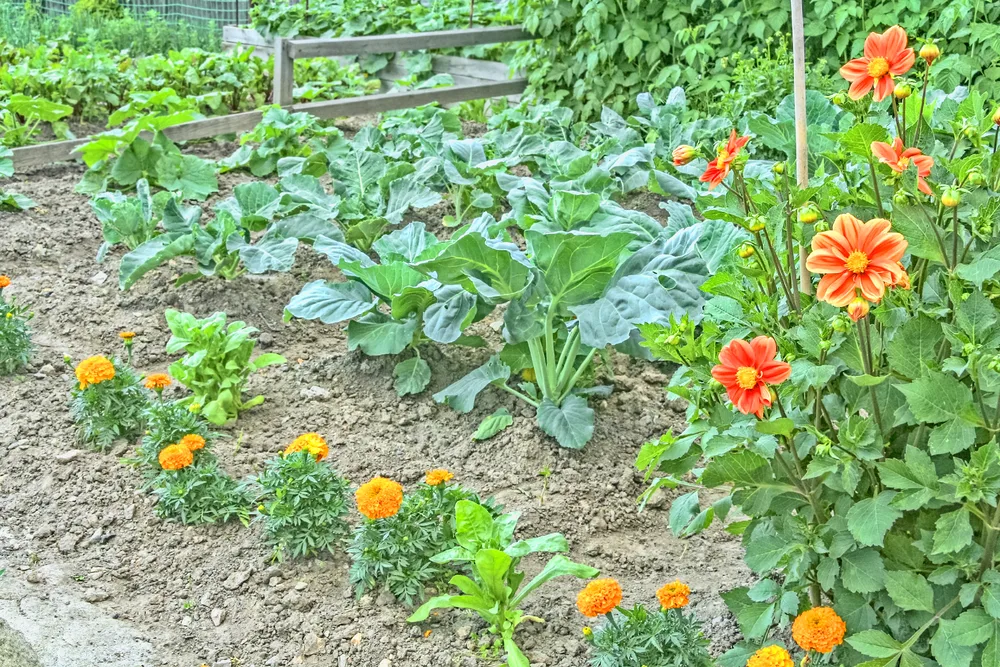
If you think you are too late with getting a garden in, think again.
Naturally, the opportunity to plant in June depends on where you live, the current weather conditions, whether or not you have a micro-climate to consider, etc.
More importantly, it matters what you intend to plant.
If you are looking to sow short-season annual crops, you are in the right place at the right time.
Perennials can still be put in the ground with care, though spring and fall are better times to plant. However, as is the case with hardy perennials, you can start harvesting many of them right now. We’ll get to that in a minute.
June is also not too late to start container gardening.
So, if you haven’t gotten around to planting just quite yet, let this list of June gardening chores inspire you to get off the screen and into the garden.
In the end, you’ll get some exercise, you’ll harvest some nutritious homegrown food and you can bond with nature in the meantime. Maybe you can even influence your partner, friends or kids to help in the garden – promoting a learning experience for all.
June gardening jobs
Take note that this garden to-do list is a general one.
You may need to adjust it to your growing zone or changing climate. Perhaps you are already experiencing July temperatures. Or maybe it still feels like May and that you are behind in planting.
At the moment, I can sympathize with the latter. The grass in the meadow is waist-high and flowering, the apple trees are still in blossom, while the zucchini we recently planted hasn’t even germinated. Talk about a slow start to summer!
If you are truly into the swing of June, make enough time to get out in the garden and continue with your regular chores.
1. Sow more seeds in June
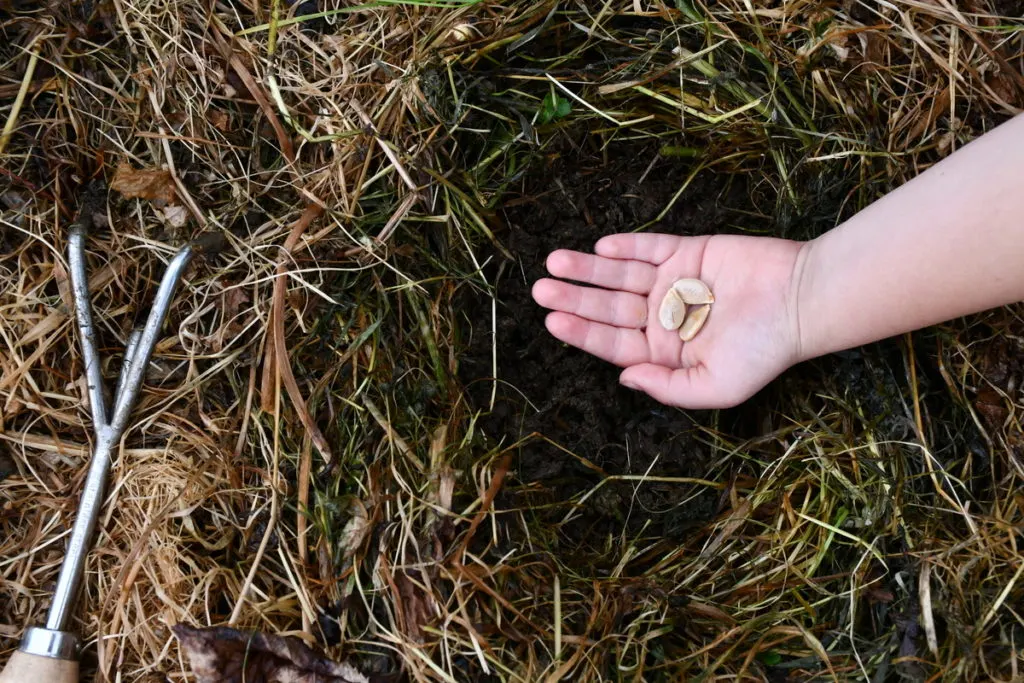
As mentioned above, it is never too late to plant a garden in June.
Sure, you should have started by now, at least with laying down the foundation of your garden.
Yet, if you haven’t mustered up the energy to get around to the actual (physical) work, there is still time to prepare the ground and sow seeds of many crops.
June is not too late to plant:
- pumpkins
- squash
- sprouting broccoli
- carrots
- kale
- sunflowers
- calendula
- nasturtiums
- beans
- beets
- coriander
- dill
- parsley
- lamb’s lettuce
- zucchini
- chard
- sweet corn and popcorn
In June, you also get to transplant any seedlings that are still waiting to get in the garden. Tomatoes, peppers, eggplants, cabbages, cucumbers, you name it.
Not that you needed to start them all from seed.
In late May through early June, you can often purchase seedlings in many different varieties from farmers markets and from other gardeners.
Sure, it costs more money this way. At the same time, it also gives you something to immediately put in your garden which will thrive when watered and taken care of.
Sometimes it feels like the easy way out. Other times it is the only way to get a garden in, particularly if you are growing in a colder climate.
Also, if you are pressed for time, the ease and efficiency of transplanting garden crops can’t be beat.
Feeling overwhelmed about getting so much in the ground?
Gardening doesn’t have to be hard or complicated. It’s only our over-thinking brains that make it so.
Simply start by planting what you like to eat. Then add in a few new things to try, without worrying about “will it be enough“.
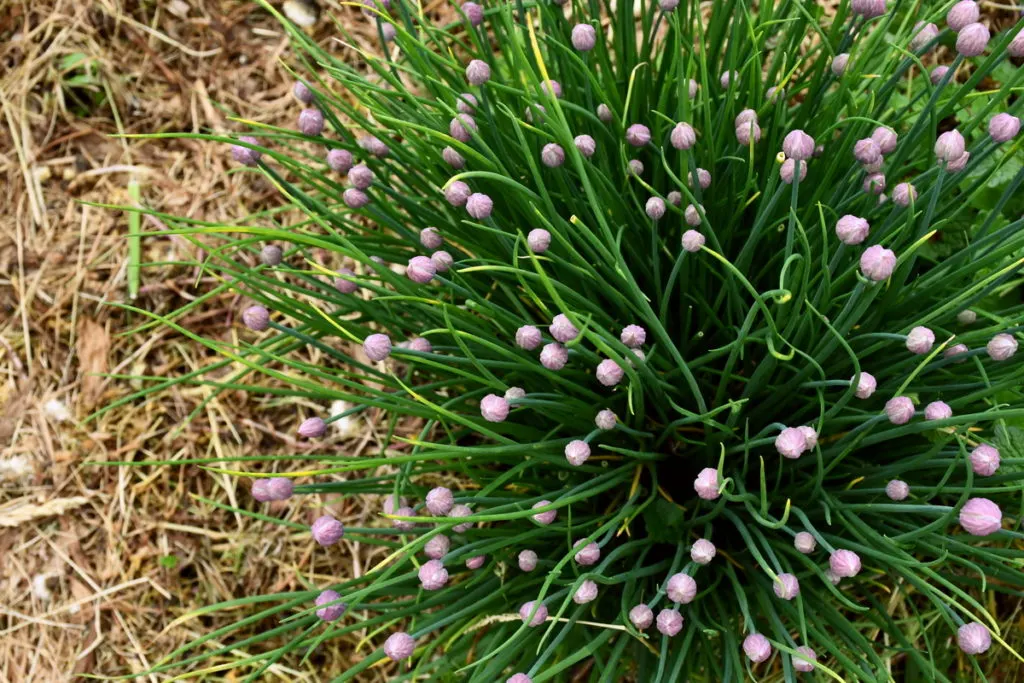
Remember that a garden doesn’t have to be full of 20 or 30 different crops. If all you wish to grow is tomatoes and beans, then tomatoes and beans it is. There is no rush and zero competition for the perfect garden.
Just enjoy the process and indulge in the harvests. That should be your main focus.
2. Practice succession planting
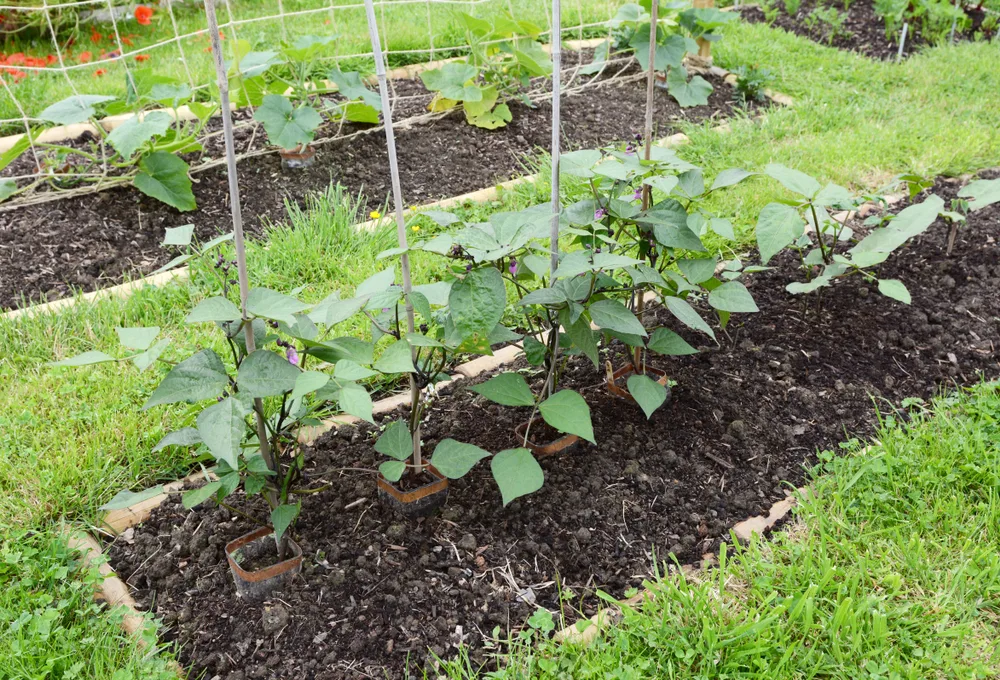
One of the best ways to extend your harvest-time, is to use succession planting techniques to increase your vegetable yields.
It isn’t sophisticated or advanced and everyone can do it – including you.
For example, unless you wish to harvest all your carrots at once (let’s say for canning purposes), you can sow carrot seeds every two weeks from spring to summer for a continuous harvest. Not only will you be able to harvest a continuously fresh supply of roots, you’ll have plenty of delicious carrot tops to eat as well.
Succession planting works well with the following vegetables:
- arugula
- beans
- beets
- carrots
- chard
- cilantro
- dill
- endive
- kale
- kohlrabi
- lettuce and other salad greens
- peas
- mustard greens
- radish
- spinach
- turnips
Succession planting shouldn’t be confused with crop rotation, though that is a good garden practice too.
In any case, think of it as your great garden experiment, in which you are rewarded with the results.
3. Weed
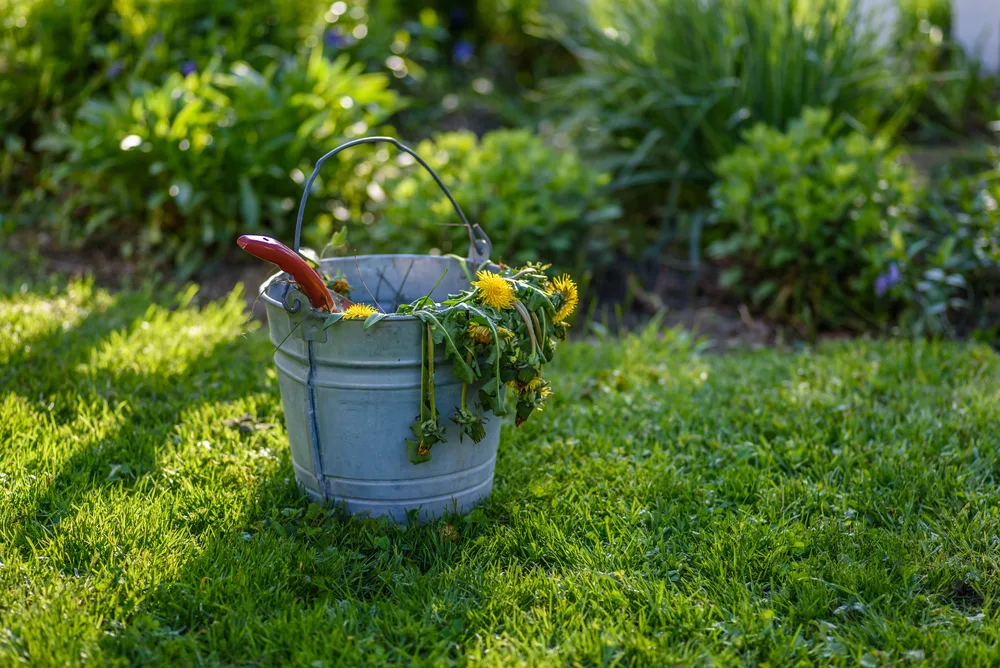
Weeding the weeds. It is always a gardener’s plight.
See, the ground always wants to be covered. That’s why we use a lot of mulch in our no-dig garden. It helps to prevent the weeds from germinating and covering the land. However, we know to eat our garden weeds as well. In fact, we let some grow in the garden as a perennial source of food.
Crazy, you say? As long as you know how to identify which ones are edible, including purple dead nettle, you are in for a vitamin-mineral treat that can’t be bought at the store.
All those dandelions in your yard? They are edible too. If you’ve already mowed them down, don’t worry, the next yellow crop will soon be back.
4. Be water conscious
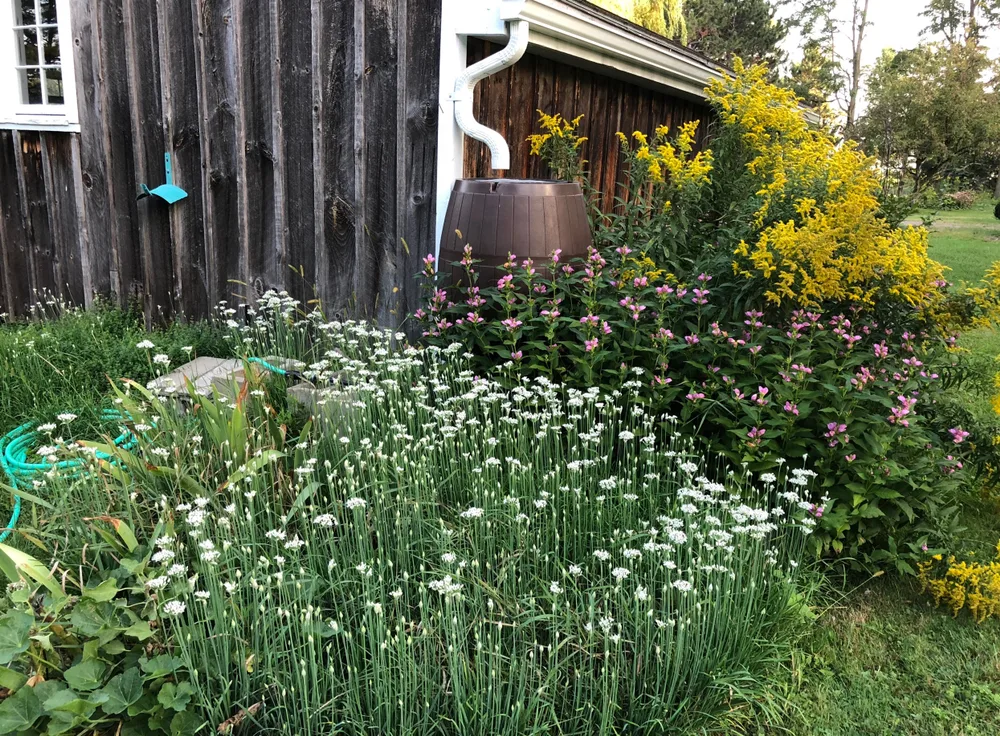
If it’s not raining or planning to rain, you may need to water your garden.
It’s one thing to plant native, drought-tolerant plants. Chances are good though, that they won’t be as juicy as an English cucumber. At the same time, many gardeners need to be careful about how much water they use to irrigate.
You also need to be prudent about what time of day to water your plants – and not make these 10 watering mistakes.
One thing you can do to conserve water is to collect rainwater for those times when the sun shines bright.
It is also worth looking into a drip irrigation system that directly waters the soil/roots, not the leaves.
5. Prune tomato plants
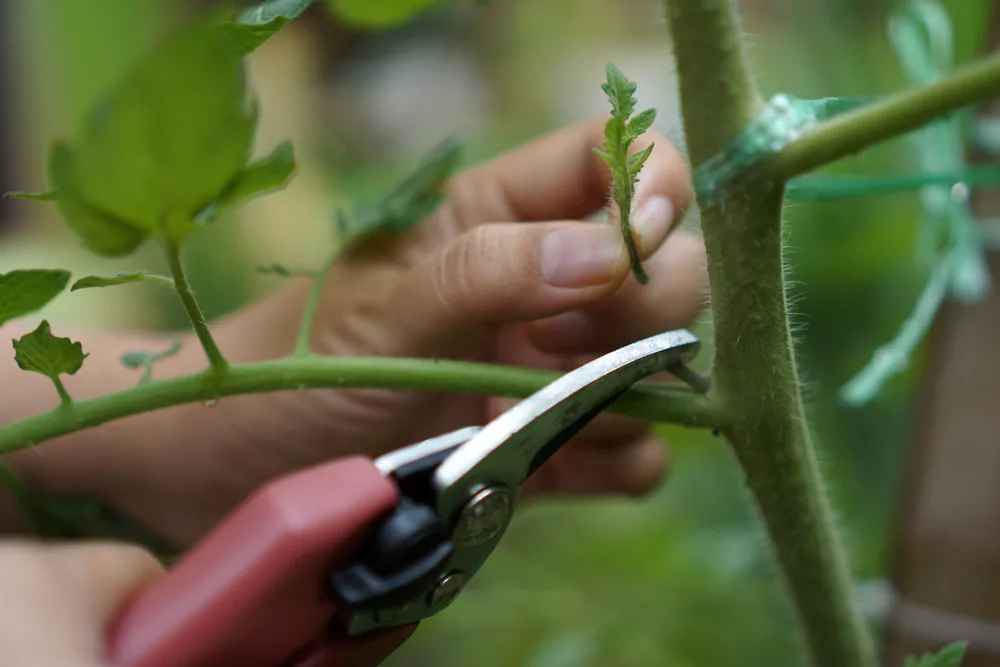
Did you know that your tomato plants benefit from an occasional pruning?
This is one gardening chore that many of us forget about – or are hearing for the first time. Tomatoes, if left unchecked, can become bushy with multiple stems. In essence, they put on weight, but not necessarily in the fruit department.
Keeping your tomatoes pruned is also beneficial because it reduces the chance for fruit and foliage to touch the ground. This limits potential diseases/mold, as it promotes air circulation around the stem and leaves.
You can simply remove the suckers when they are young by pinching them off with your fingers. Use pruners if those suckers are more mature.
Related Reading: 15 Common Mistakes Tomato Gardeners Make
6. Potato care
Now, that your potatoes are sending up greenery, you need to keep an eye on insects. Particularly the Colorado potato beetle. They can do their damage quickly and efficiently before you even realize that they are there.
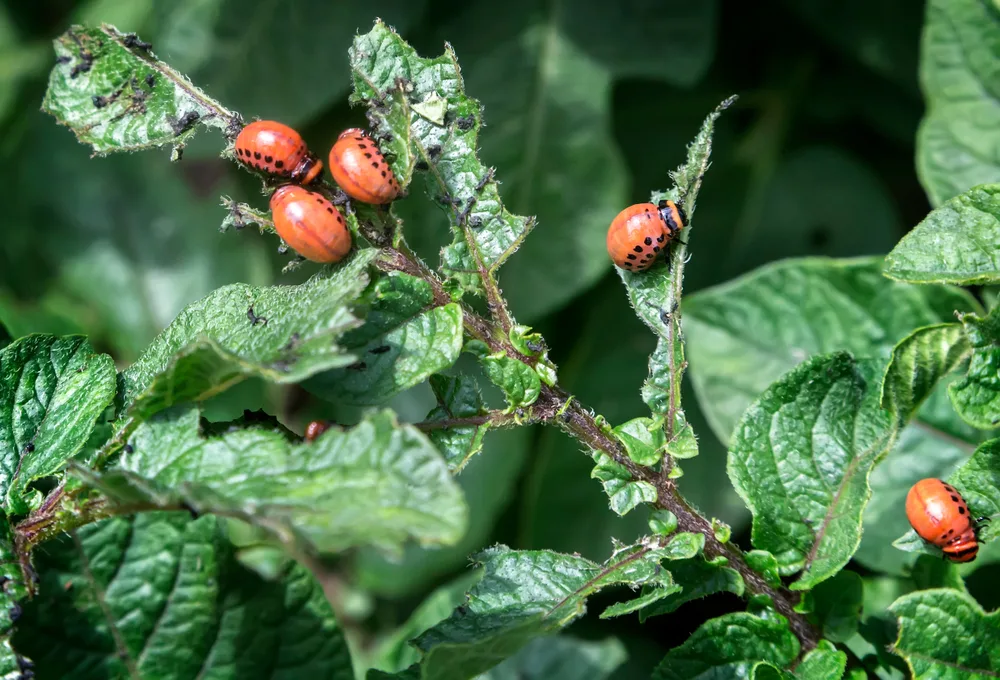
Potato beetles not only reduce yields, they can kill an entire plant by eating everything including the flowers. There are natural ways of removing them by hand and some non-natural ways to limit their population too.
First and foremost, you should try companion planting with your potatoes to increase your harvest.
In June, you should also prepare for hilling your potatoes. The addition of organic matter, or soil, helps to keep the tubers in the dark.
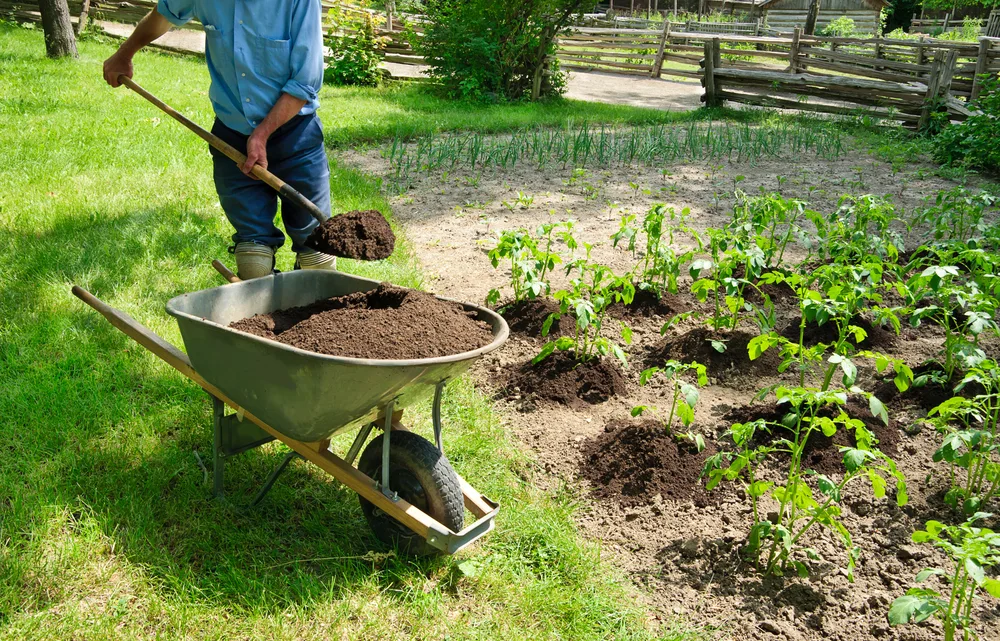
If your spuds receive too much sunlight they can become bitter. They will turn green and produce the toxic compound solanine, which makes them inedible.
Related reading: 21 Genius Ideas For Growing Sacks Of Potatoes In Tiny Spaces
7. Harvest, harvest, harvest
Most strawberries are ready to eat in June. As is rhubarb, if you haven’t gotten around to eating the tempting stalks already.
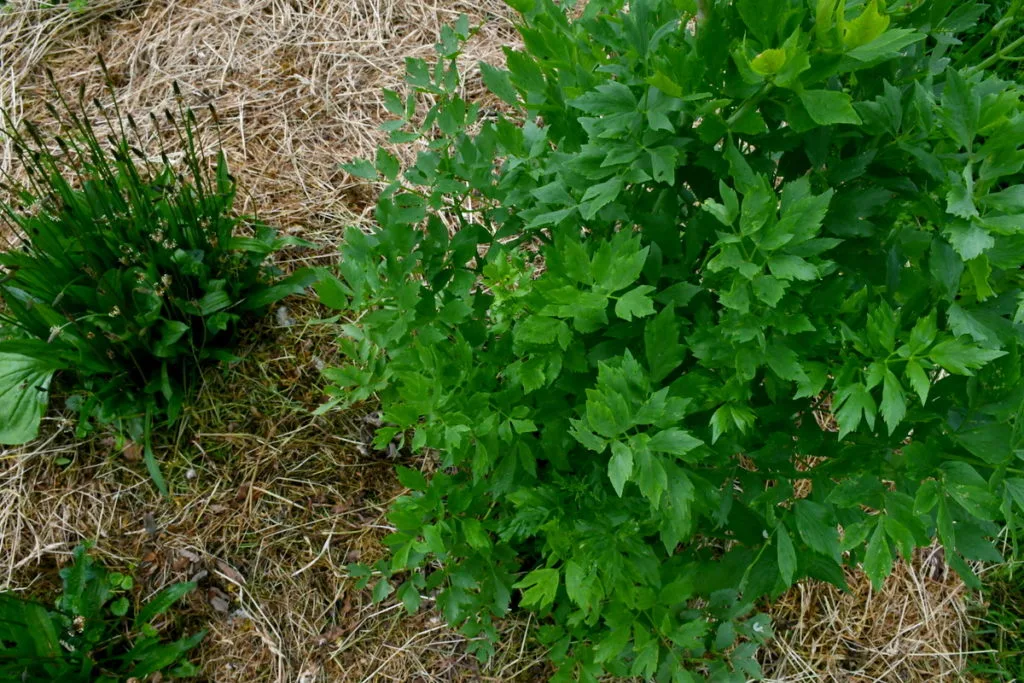
What to harvest in June:
- chives
- ruccola
- radishes
- peas
- salad greens/lettuce
- mint
- lovage
- carrot greens
- strawberries
- garlic scrapes
- new potatoes
- wild-foraged plants: hop shoots, dandelion leaves/roots, goosefoot, plantain and much more
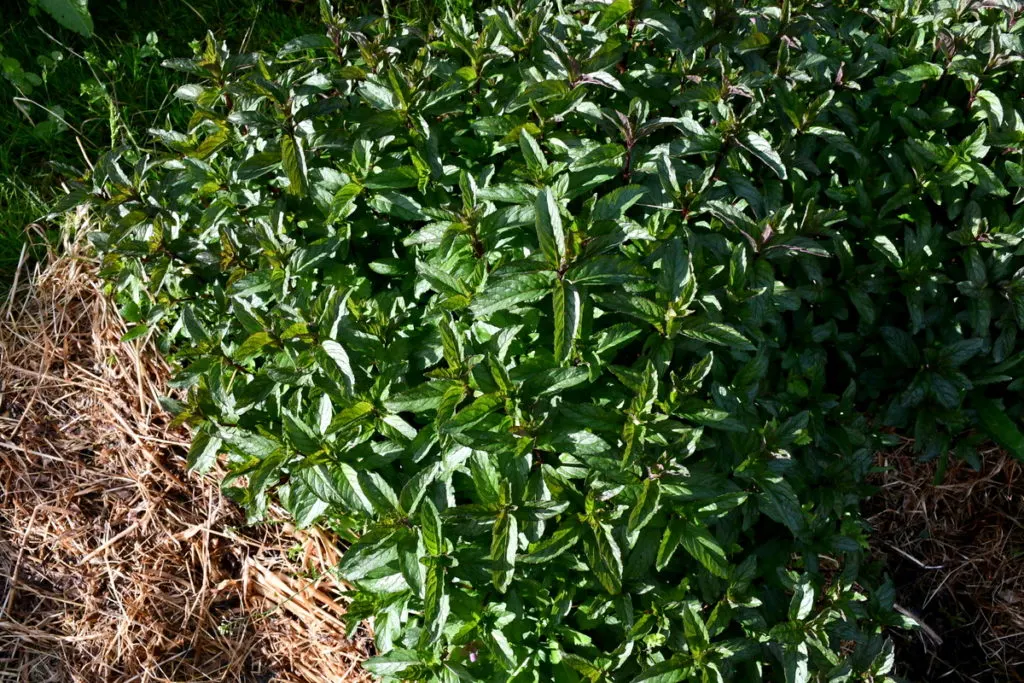
Mostly, your June harvests will be for fresh eating. Though you will be able to start canning and preserving soon.
You can also use this time to get ready with canning jars and equipment, making space to store your jams/pickles/chutneys and discovering recipes aplenty.
8. Stake and support plants
Supporting your garden plants is often necessary, especially in damp climates. It keeps fruit from touching the ground and rotting, it prevents stems from breaking under the weight of a bumper crop and it allows for vertical growing.
All in all, it can help you fit more plants into a smaller space.
It isn’t just tomatoes that need support in the garden.
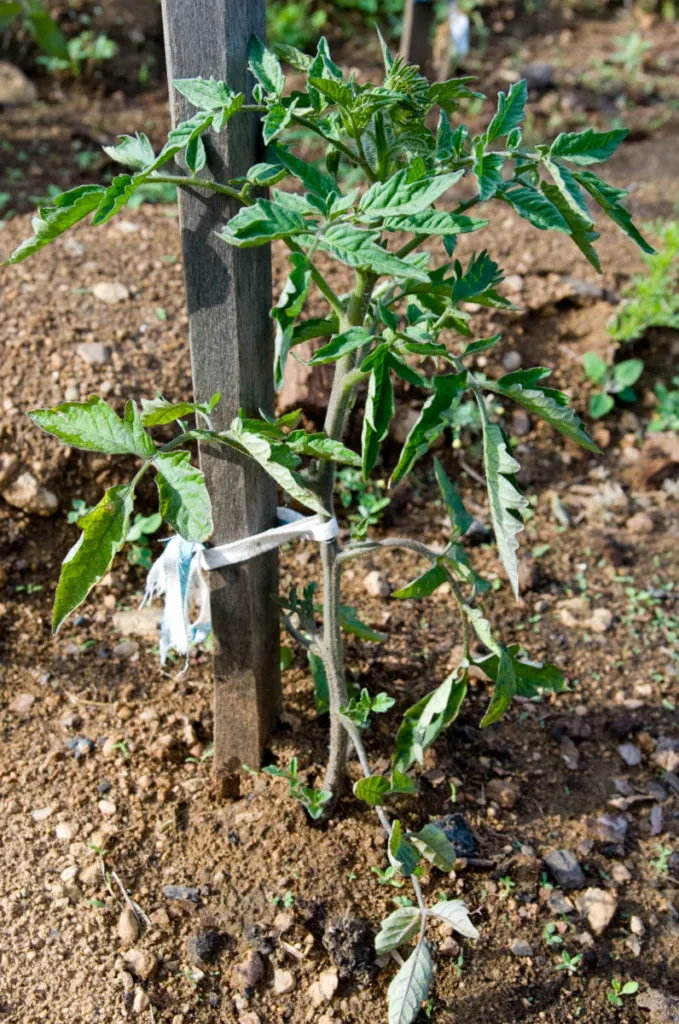
You can also use stakes or tomato cages to protect your peas, pole beans, peppers, cucumbers and cucamelons.
The important thing is to set them in place as you are planting, or when the plants are very young. Try not to disturb the roots.
Be sure to mulch around any plants that can benefit from that too.
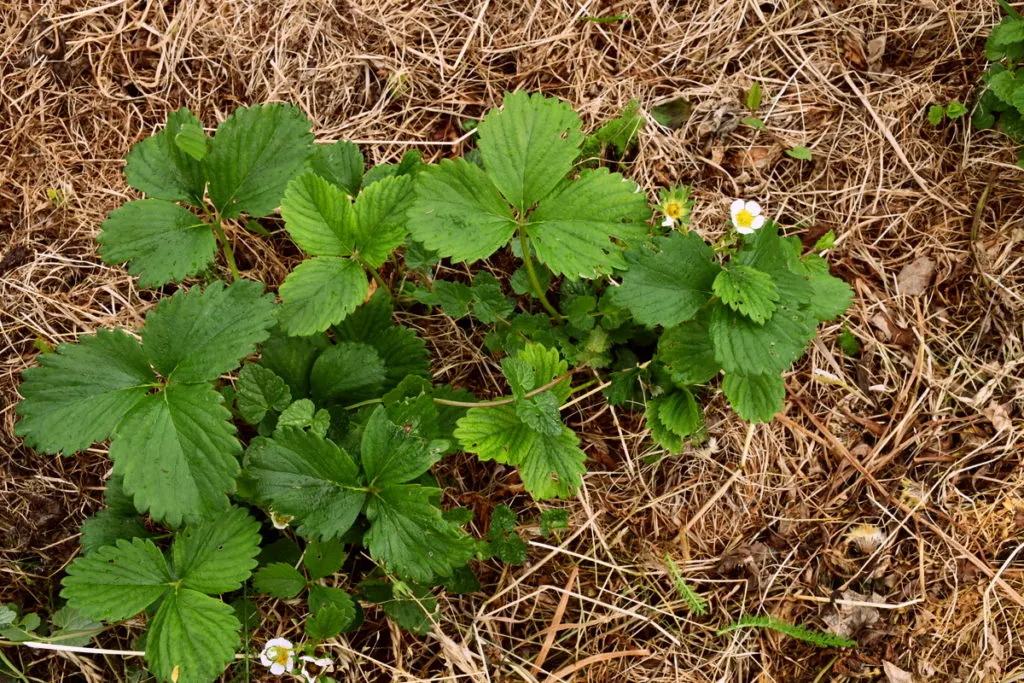
9. Mow – or scythe – your lawn
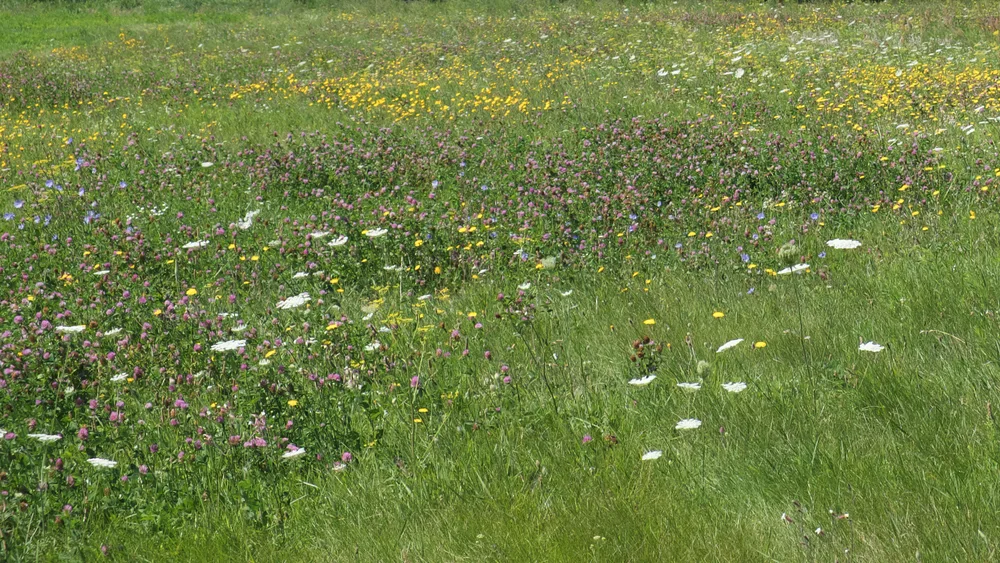
We typically scythe our lawn for the first time at the end of May. This way the bees and abundance of other insects have had their fill of all sorts of pollen and are merrily on their way to greener pastures.
One might say that it is easier living out in the countryside. There are fewer regulations about turning your lawn into a wildflower meadow.
There is much less “short grass envy” too.
Grass, when left to grow, can be useful for mulch in the garden, it can be fed to animals, turned into hay, etc.
That’s not to say you have to give up mowing entirely.
What you can do, is mow less often and raise the height of your mower to the highest setting.
In doing so, you’ll use less gas (energy), attract more fireflies/lightning bugs and pollinating insects, provide a safer space for birds and conserve water at the same time.
A chemical-free lawn puts everybody and everything at ease, pets included.
10. Prune spring-flowering shrubs
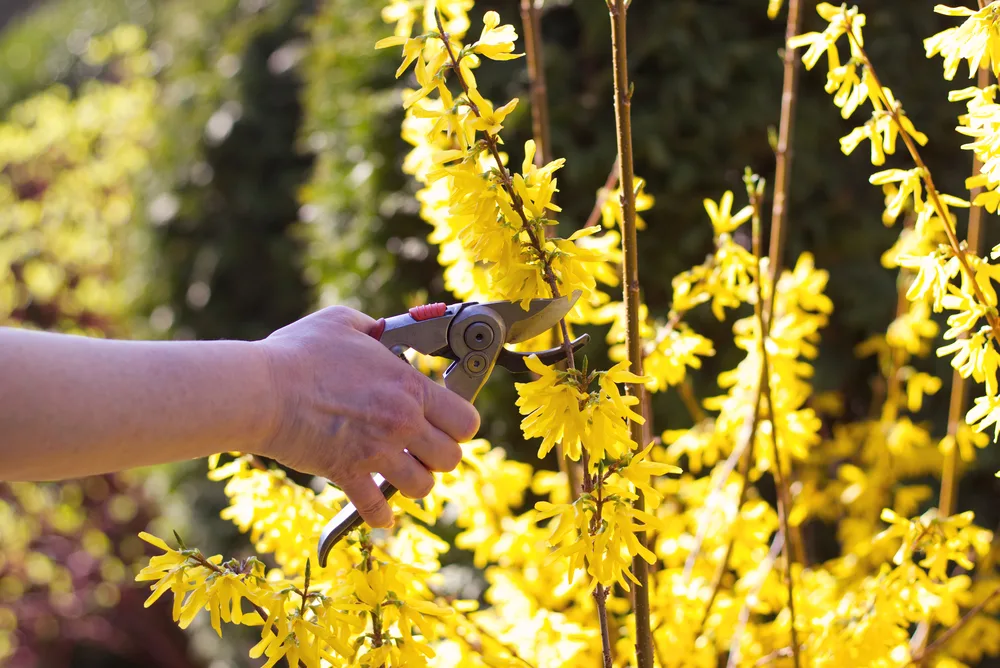
Garden work often merges into yard work. If you have some spring-flowering shrubs, such as lilacs, forsythia, azaleas, rhododendron or viburnum, the best time to prune them is when they are finished blooming.
It is easy enough to remove the spent flowers, though you can go deeper than this and use the renewal method of pruning. In this way, some of the largest stems are cut back to the ground. Naturally, new shoots will emerge and fill back in.
If you notice that your bushes aren’t as flowery as they used to be, old branches could be the reason why. Pruning is often necessary with shrubs to increase the amount of flowers. Learn it once and those skills will last a lifetime.
11. To thin, or not thin, fruit on trees
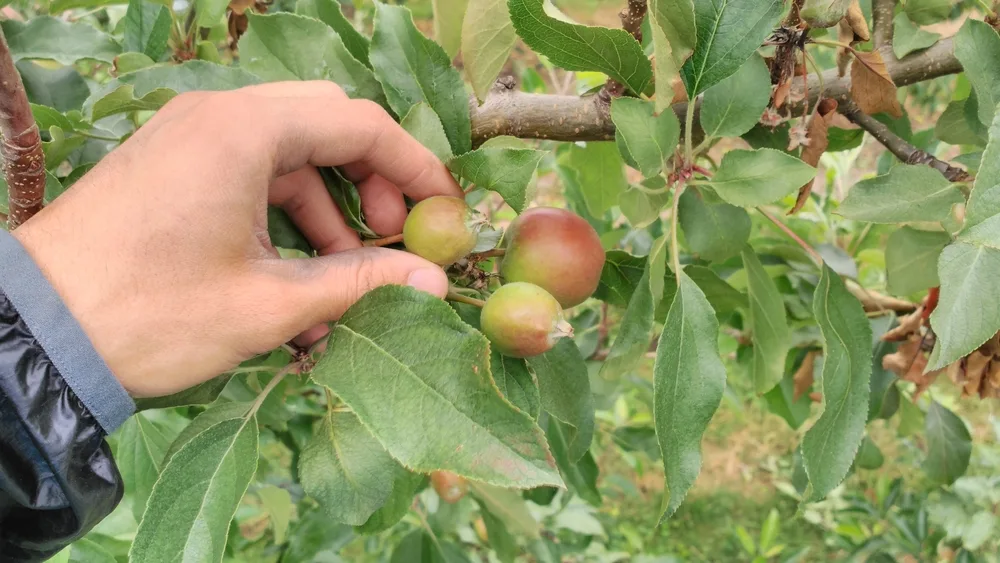
There are multiple ways to manage fruit trees in your backyard orchard.
One way is to let nature take its course.
This is the least amount of work for you. It also means that you trust in the ability of the tree to know how much it can handle.
Another rule of thought is that we can remove fruit in order to not overburden a tree with a potentially heavy harvest. You’ll get less fruit, though each will be larger.
There is logic to both and it is entirely up to you which side of the branch you sit on.
12. Observe your garden
As temperatures rise in June, be on the lookout for insects and other damage to your garden crops.
Every time you head to your garden (try to go observe it at different times of day) be aware of the details. Get down close to your plants and take a closer peek at their flowers, stems and leaves. Look under the leaves as well.
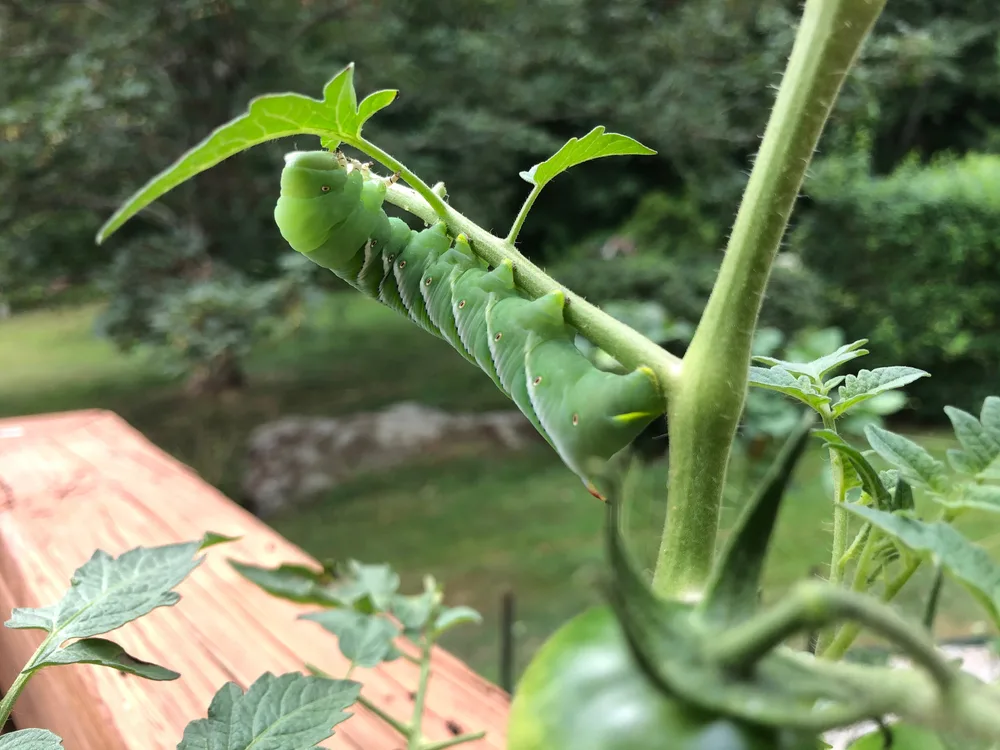
Now is the time for insects to find a nice meal: aphids, cutworms, cabbage worms, tomato hornworms, slugs and snails.
You’ll also want to watch out for rust, leaf spot and powdery mildew.
There’s no need to panic, just be aware.
Once you identify the problem, you can then deal with it. Of course, prevention is the best cure, but gardening always comes with its ups and downs. Just learn to grow with it.
13. Provide water for birds and other backyard creatures
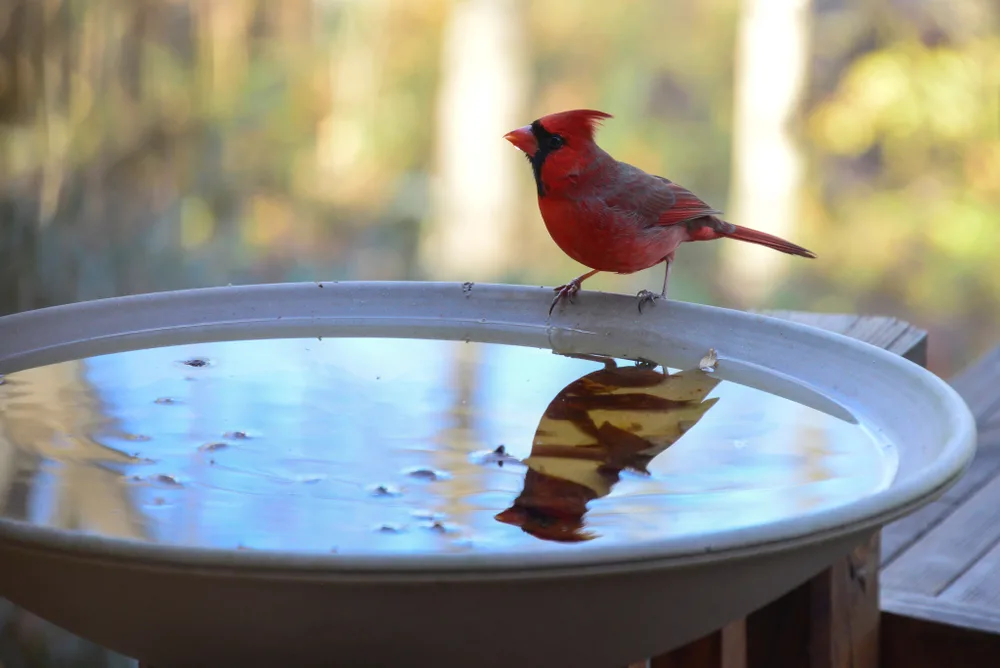
In other words, prepare yourself and your garden for a backyard rewilding of sorts.
Birdwatching has increased in popularity in recent years for good reasons. Not only can you provide a source of water for your fine-feathered friends, you can also plant bushes, shrubs and trees to attract birds to your yard. This will provide them with food and shelter for free.
In return, they will help keep the insect populations in check.
Related reading: How To Make A DIY Rustic Hanging Bird Bath
14. Make a set of herb-drying trays

Are you ready for drying your foraged plants and garden herbs?
There are a few ways to accomplish this:
- utilizing a dehydrator
- hanging herbs
- using an herb drying rack
All have their pros and cons. Dehydrators are bulky and consume electricity, yet they are reliable and efficient.
Hanging herbs to dry takes a warm, well-ventilated space. It works well for some herbs, not so well for others (if the leaves have a tendency to fall off).
An herb-drying rack is an in-between option. You can lay the herbs, edible flowers and leaves on the screen for as long as it takes to dry them properly.
Gardening chores are like the dishes, or the laundry. They are never completely over.
Keep planting, continue harvesting and enjoy the process. Do it for yourself, for your family and friends, as well as for the sake of self-reliance.

Get the famous Rural Sprout newsletter delivered to your inbox.
Including Sunday ramblings from our editor, Tracey, as well as “What’s Up Wednesday” our roundup of what’s in season and new article updates and alerts.

